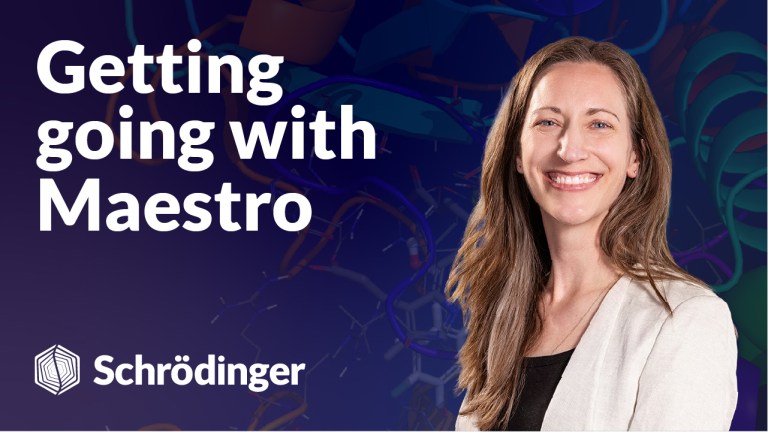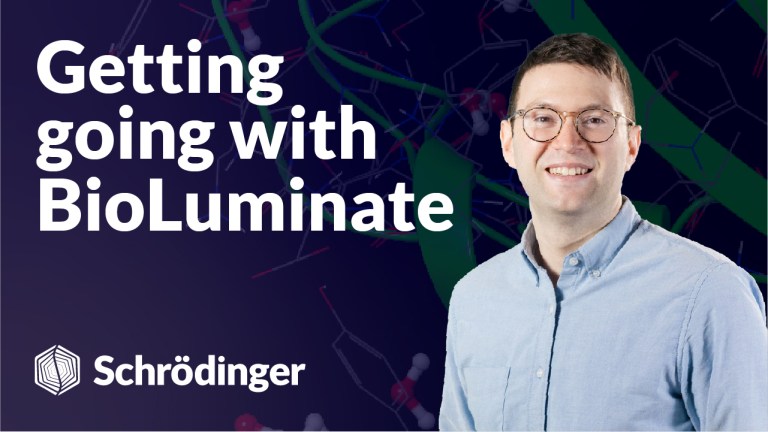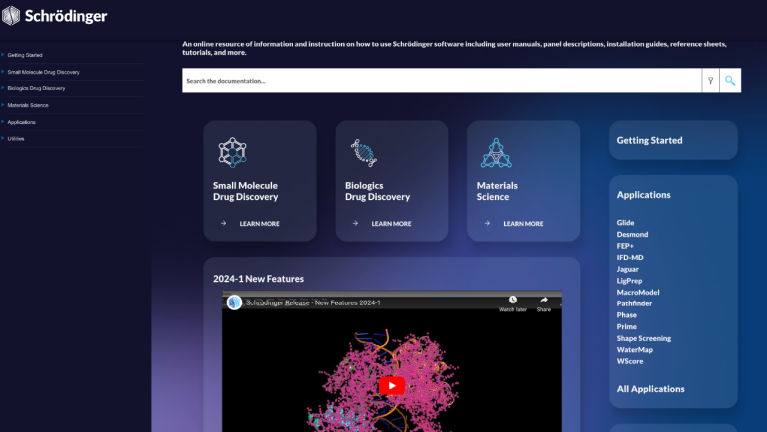Free learning resources
Quickly learn how to integrate Schrödinger technology into your research. From overviews to deep dives, you can find information about applications, workflows, and analysis here.
Quickly learn how to integrate Schrödinger technology into your research. From overviews to deep dives, you can find information about applications, workflows, and analysis here.
 Video
Life Science
Video
Life Science
 Video
Life Science
Video
Life Science
A free video series introducing the basics of using Maestro Bioluminate.
 Documentation
Life Science
Documentation
Life Science
Self-guided step-by-step introductions to various workflows with example files for getting comfortable with Schrödinger tools.
Short video overviews of specific introductory and scientific topics, including summaries of new release features.
A one-page PDF that visually describes the panel or workflow.
Learn how to prepare structures for docking and create a protein mutation by modeling an olfactory receptor.
 Video
Life Science
Video
Life Science
A free video series introducing the basics of using Maestro Bioluminate.
 Video
Life Science
Video
Life Science
 Documentation
Life Science
Documentation
Life Science
A structured overview of tools and workflows for predicting biomacromolecular structures in whole or in part.
A structured overview of how to construct a virtual screening pipeline.
A structured overview of tools and workflows for analyzing and understanding the behavior of target proteins.
Determine pKa values and protonation states for protein residues.
Increase protein thermostability by filling a buried cavity through mutation with protein FEP+.
Use the Coarse-Grained Force Field builder to automatically fit parameters for the Martini coarse-grained force field, utilizing all-atom systems as the reference for various systems.
Learn how to compute the refractive index and extinction coefficient of systems of organic optoelectronics.
Level up your skill set with hands-on, online molecular modeling courses. These self-paced courses cover a range of scientific topics and include access to Schrödinger software and support.
Connect your students to industry-leading molecular modeling software through a web-based platform. Incorporate molecular modeling in the classroom.